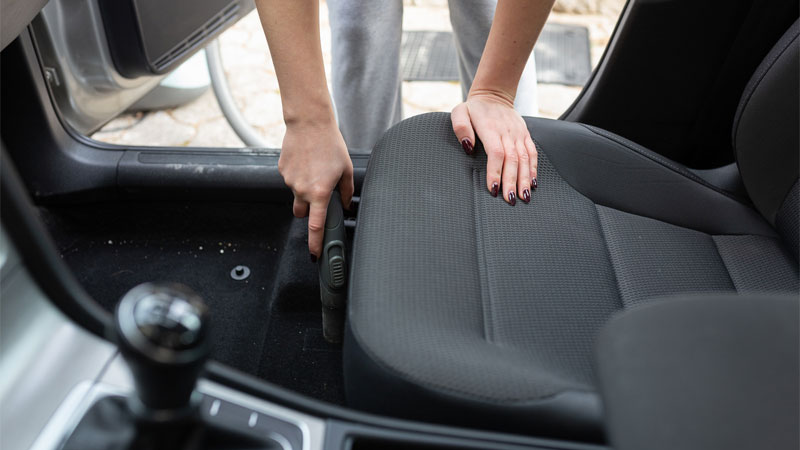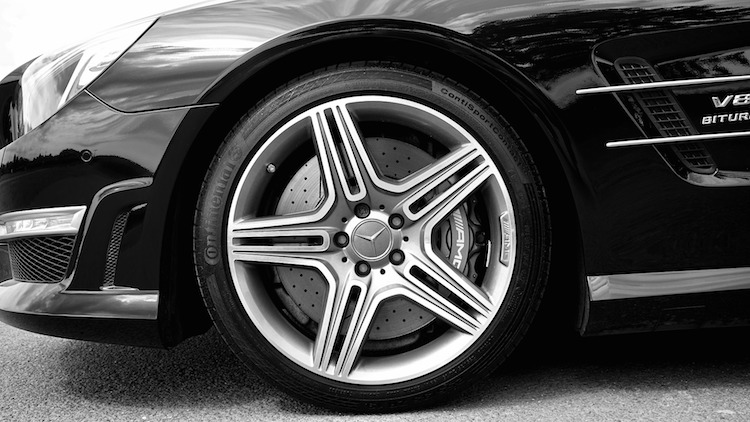If you want to get your car to look “showroom new” you can either pay handsomely to have a professional detail it or do the job yourself. For most people, the end result and satisfaction knowing your detailed your own car is even more valuable than the hundreds you would have paid for a pro to do it.
Choose an overcast day or find a shady area to undertake a project that will take two to three hours to complete.
1. Assemble Your Tools
Interior
Start off by assembling the tools needed to detail your car. For the inside of your car, a vacuum cleaner with attachments or a shop vacuum will do. A floor brush, a crevice tool, and an upholstery tool are sufficient.
Separately, a stiff brush can loosen packed down dirt that your vacuum cleaner cannot reach. Carpet cleaner and upholstery should be available for soiled carpets and seats.
Exterior
For the outside of your car you will need: (2) five-gallon buckets, a garden hose with an adjustable nozzle attachment, an oversized sponge, a chamois mitt, microfiber towels, a rubber-blade squeegee, a stiff brush, cotton swabs, a soft bristle toothbrush, car wash cleanser, window cleaner, all-purpose cleaner, paper towels, tire and wheel cleaner, and polish.
Keep a trash bag handy and another bag for gathering up reusable rags for washing.
2. Vacuum the Interior
Plug in your vacuum cleaner and work from the top of the seats down to the floor. Use the upholstery tool for the seats, replacing it with the crevice tool to get to difficult-to-reach areas.

Remove the floor mats and clean them separately; use the floor brush and crevice tool to lift dirt from the carpeting. Bring out the stiff brush for packed down dirt and then vacuum.
Move each seat forward to clean out the tracks and to reach hard to get areas. Sprinkle carpet cleaner powder across floor surfaces as needed and then vacuum same.
Make sure you remove any traces of food or you could be dealing with ants or roaches in your car.
Take your cotton swabs and begin to work on tight or delicate crevices such as the air vents. Spray all-purpose cleaner on a rag and wipe down soft-touch surfaces such as the dashboard, doors and the center stack. For leather surfaces, use only a leather-approved product.
The same precautions should be taken when cleaning real wood trim, chrome or aluminum. Complete your interior work by using glass cleaner on all translucent surfaces, drying the same with a paper towel. Vacuum your floor mats and return them to the inside of your car.
See Also – 4 Car Upholstery Cleaning Tips
3. Wash Your Car
Take your garden hose and put it on a moderate setting. Your car should be sitting in shade or the day should be overcast to avoid spots and streaking. Hose down your car from top to bottom, directing the hose across the roof and down the hood, back across the body to the trunk.
Wash down the other side of your car before rinsing off the headlights, tail lights, tires, and wheels. Pay attention to nooks and crannies including the bottom of your windshield, ventiports, grille inserts and door openings.
Place the required amount of carwash cleaner in the bucket and fill with water. Fill the second bucket with clear water. Take your oversized sponge and dip it into the first bucket. Place the sponge on top of your car’s roof and begin to clean the surface in a back and forth motion. Avoid cleaning in a circular motion as that causes streaking.
Move quickly to the other surfaces of your car to complete your cleaning before the soap dries. Replace the sponge with the mitt to clean the grille, lights, around wheel wells and across the rocker panels. Frequently clean off your sponge and mitt by dipping same in the second bucket. Reapply the cleaning agent in the first bucket.
Take your garden hose and repeat the earlier rinsing step by working from the top of the car down to the bottom. Thoroughly rinse away all soap and residue before putting the hose to the side.
4. Dry Your Car
Take the rubber squeegee and quickly move it across the car’s surface in a back and forth motion to remove excess water. Next, take one microfiber towel and wipe down the car. Use a highly absorbent towel, one that will soak up the remaining water.
Take a second towel and wipe down the grille, chrome trim, the rear deck and around the wheel wells. Finish up by drying the tires. Take out a third towel to wipe down the wheels, clean the door jambs and to wipe off the area behind the fuel filler door.
Clean exterior windows and other glass surfaces by spraying glass cleaner directly on the paper towel and then wiping down the same. Avoid applying glass cleaner directly to the glass as overspray can land on your car’s surface.
5. Apply Wax
Choose your favorite car wax, paste or liquid and begin to apply same to the surface of your car. Apply the wax in a linear or front to back motion, creating overlapping straight lines. Go over each section at least three times to ensure that the entire car is covered.
Take a clean microfiber towel and wipe the surface in a “w” motion once the wax has settled or cured, applying pressure to the towel with the palm of your hand. Cover the entire surface once and then repeat the wiping off portion of this step again to ensure a spot-free look.
6. Finish Up
Spray wheel and tire cleaner liberally across both tire and wheel surfaces. Use a clean towel for wiping, the toothbrush to work on crevices and use a cotton swab for very tightest areas.

Apply chrome polish to a clean towel and wipe down all chrome and shiny surfaces not detailed earlier. Avoid coming in contact with the car’s surface.
Clean out the buckets, put away the hose and vacuum cleaner, throw out the trash, put away your cleaning supplies and place the bag of dirty rags in your laundry room.
When carefully accomplished, your car will look as good as what the professionals do without the $150 to $250 charge incurred. If your vehicle is especially dirty you may need to invest in tar and adhesive remover to rid it of persistent blemishes.
See Also – 10 Father’s Day Gift Ideas for the Car Enthusiast
- 2024 Mazda CX-50: A Compact SUV with Premium Aspirations - Apr 15, 2024
- 2024 Ford Mustang (Iconic Pony Car Evolves) - Apr 4, 2024
- 2024 Ford Maverick (Looks Like a Truck, Drives Like a Car) - Mar 28, 2024


